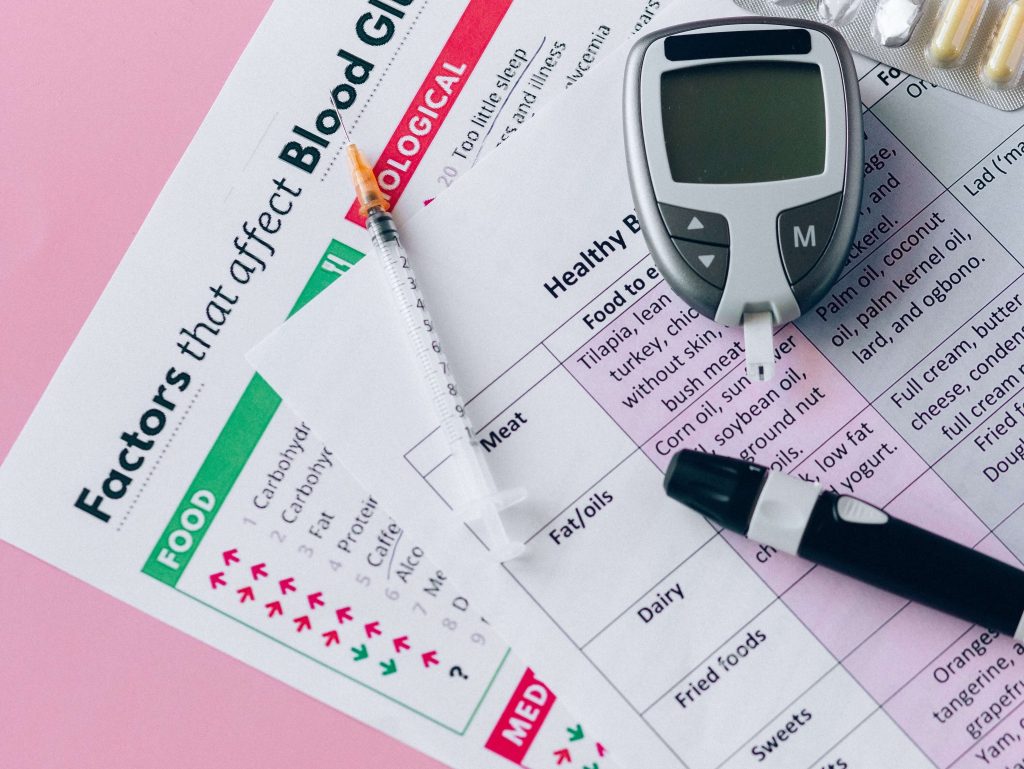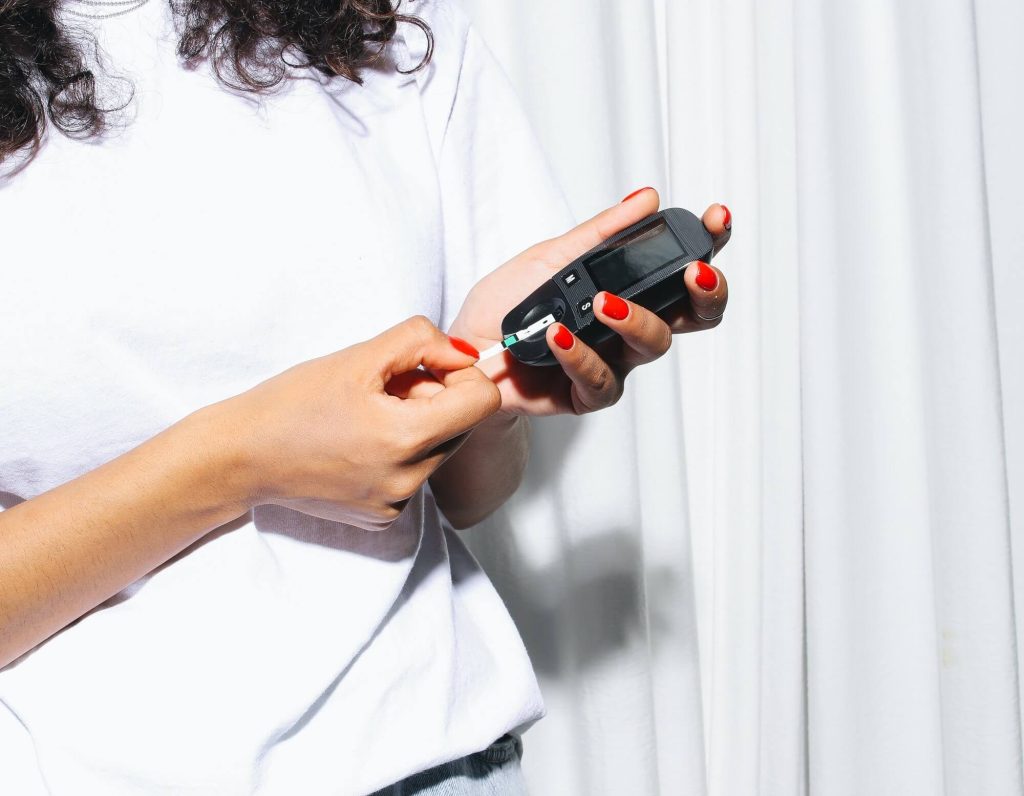What are Diabetes and Teas to Reduce Blood Sugar
Diabetes is a chronic disease characterized by high blood sugar levels. It occurs when the body does not produce enough insulin, or cannot use it effectively. Insulin, on the other hand, is a hormone produced by the pancreas that regulates blood sugar levelsa by facilitating the absorption of glucose for energy.
According to the World Health Organization (WHO), in 2021 there were about 420 million diabetic adults in the world – most of them type 2 diabetics.
Fortunately, in addition to traditional medicine and proper medical monitoring, there are natural options that, while not curing the disease, help regulate glucose. These teas are ideal for those who have diabetes or are at risk of developing it.
In this article, we’ll talk a bit about what is diabetes, what teas you can drink to lower your blood sugar and improve your quality of life, and how to make them.

The 3 types of diabetes:
The causes of diabetes aren’t just eating too many sweets and getting too little exercise. Of the 3 known types of diabetes, there are causes as diverse as they are uncontrollable. Stress, hormones and genetics are as relevant as diet and lifestyle.
- Type 1 diabetes: this type of diabetes is an autoimmune disease, where the immune system destroys the insulin-producing cells. Due to the destruction of these cells, type 1 diabetes patients need to obtain insulin by external means to regulate sugar levels.
- Type 2 diabetes: this is the most common type of diabetes, accounting for the majority of cases. It occurs when the body becomes resistant to the effects of insulin or cannot produce enough insulin to balance blood sugar levels. It is caused by many factors, including lifestyle, diet and physical inactivity. However, it can be managed with changes in habits, medication and sometimes external insulin.
- Gestational diabetes: this occurs during pregnancy when hormone levels can lead to insulin resistance. It usually heals after delivery, but expectant mothers are more likely to develop type 2 diabetes later in life.
The risks associated with diabetes are diverse and cover many areas of health. Without proper care and monitoring of blood sugar levels, the consequences can be severe.
Teas that help with diabetes
Tea is one of the most versatile and globally consumed beverages. It is also famous for its medicinal and therapeutic properties. So it’s no surprise that there are teas that have a particularly positive impact on people with diabetes. Combined with a healthy lifestyle, plenty of water, and the medical recommendations of healthcare professionals, these teas can help improve the quality of life of diabetic people.
Yerba Mate:
Yerba Mate, Mate, Gongonha or Ilex paraguariensis is a highly antioxidant herb rich in 190 active principles that favor the proper functioning of the body. It is probably one of the few plants that contains almost 100% of the 24 essential vitamins and 16 minerals. This plant of South American origin is known for its stimulating potential and for promoting weight loss.
- Water temperature: 100 °C
- Recommendation: take from the morning (after waking up) until midday, about 30 minutes before. This recommendation is due to the fact that this tea contains caffeine.
Preparation of Mate Tea:
- Boil water to the recommended temperature.
- Take the Cuia (Gourd) and fill it halfway with Yerba Mate. Place your hand on the top of the gourd and gently shake the inside of the gourd.
- Then remove your hand and place the Bombilla in a free space in the Cuia.
- Finally, add a little cold water and then fill the Cuia with hot water. Avoid stirring the mixture. To consume your Mate Tea, simply drink it through the Bombilla.
- It is important to avoid preparing the infusion with water that is too hot so that it does not become bitter.
Saffron / Turmeric:
Turmeric Tea is recommended for lowering cholesterol, improving digestion and relieving joint pain. This medicinal tea is also known to actively influence energy expenditure. Hence, it is an excellent natural option for obese people and those who need to go on a detox diet. In addition to acting as a stomach protector, it improves intestinal transit and stimulates cognitive performance. Learn more about turmeric tea in our article dedicated exclusively to it: Turmeric Tea.
- Water temperature: 100º
- Infusion time: 10 to 15 minutes.
- Recommended amount: 5 pieces of Organic Turmeric Root per liter of water (1000ml).
- Dosage: Drink 3 cups of tea a day. The first cup in the morning while fasting, the second during lunch and the third during dinner.
How to prepare Turmeric Bio Tea:
- Place 5 pieces of Turmeric in a pot with a liter of previously boiled water.
- Cover and leave to infuse for 10 to 15 minutes.
- Finally, strain and allow to cool slightly before drinking. For best results, practice a healthy lifestyle.
Cow’s Foot:
Cow’s Feet Tea (or Pata de Vaca) contains antioxidant, diuretic and hypoglycemic properties essential for urinary, cardiovascular and renal wellness. It is widely used for the control of diabetes and blood pressure. Pata de Vaca tea is recognized as an excellent ally in balancing blood sugar levels (diabetes) and controlling blood pressure. Pata de Vaca acts in the reduction of renal glycosuria, that is, in the reduction of glucose present in the urine. Cow’s Feet Tea stimulates the production of insulin in the pancreas, favoring the elimination of glucose (sugar) through urine.
- Water temperature: 100º
- Infusion time: 5 to 10 minutes
- Recommended amount: 1 dessert spoon of Pata de Vaca leaves per cup (250ml). It is recommended to consume 2 cups of tea per day, after each main meal.
How to prepare Pata de Vaca tea:
- Place 1 dessert spoon of Pata de Vaca leaves in 300ml of boiling water.
- Boil this mixture for about 5 to 10 minutes.
- Then remove from heat, strain and allow to cool slightly before drinking.
- To make the taste of the tea more pleasant, simply add two lemon zest or lemon juice during the brewing process. For best results, a healthy lifestyle is recommended.

Insulin Plant / Climbing Indigo:
You may find plant insulin under the following names: insulin plant, wild grapevine and/or bearberry. Plant insulin is known to be a natural solution for controlling blood sugar levels (glycemia/diabetes). The leaves are harvested from a plant that can take the form of a climbing vine about 10 meters high or as a shrub, 3 meters high.
The insulin plant contains hypoglycemic, antioxidant, antimicrobial, anti-rheumatic and anti-inflammatory properties. However, it is well known for its influence on diabetes control. When preparing plant insulin tea, the leaves are usually used in dried form. However, you can use them in natural form.
- Water temperature: 100º
- Boiling time: 5 minutes
- Infusion time: 10 minutes (minimum duration).
- Recommended amount: 10gr of plant insulin leaves per liter of water. Drink 2 to 3 cups a day, before each main meal.
Method of preparation:
- Place the leaves in a pot of water and boil for 5 minutes.
- Remove from the heat, cover the pot and leave to cool for at least 10 minutes.
Bitter Melon:
The wild species “Momordica charantia” (bitter forest melon, bitter forest cucumber, bitter forest gourd, St. Caetan’s Melon or Karela) is a tropical and subtropical vine that grows in the tropics and subtropics. The Eucalyptus family, with edible fruits, is the bitterest of the greens. This is a native of the tropics, but it is not clear from which country its true origin is. You can learn all about the St. Caetan’s melon and its tea in the article dedicated to it on our blog: Bitter Melon.
- Recommendation: drink 2 to 3 cups a day for up to 8 weeks, as advised by your doctor or healthcare professional.
How to prepare St. Caetan’s Melon tea:
- Place the leaves of the St. Caetanus melon in a cup of boiling water.
- Cover and leave to stand for 10 minutes.
- Strain and it is ready to drink.
St. Caetan’s melon is also available in our store in capsule or sachet form.
In addition to these options, our store also has a special medicinal tisane dedicated to fighting diabetes.
Diabetes Medicinal Tisane:
Curated especially with diabetic patients in mind, this tisane fuses several herbs and plants known for their roles in blood sugar control and good blood circulation.
Ingredients: Ever-Beautiful plant (Polygonum aviculare l.), Bean pod (Phaseolus vulgaris L.), Cashew bark (Anacardium occidentale), Eucalyptus leaves (Eucalyptus globulus Labill.), Verbena plant (Verbena officinalis L.) and Earth Felt plant (Erythraea centaurium Pers.).
- Water temperature: 100º
- Infusion time: 5 to 10 minutes.
- Recommended amount: It is recommended to take 1 liter of this tea a day. You can choose to consume one cup in the morning and one in the evening. The rest that remains can be drunk after meals.
Directions:
- Place 2 tablespoons in a container in a liter (1L) of boiled water.
- Cover it and let it stand for about 5 to 10 minutes.
- After resting, strain the tea and it will be ready to drink, cold or hot.

Tips for managing or avoiding diabetes
- Avoid refined carbohydrates, sugar and sugary drinks, alcohol, pastries, cold cuts, fatty meats, full-fat dairy products, etc.
- Instead of salt, focus on herbs and spices;
- Eat fruit, seeds and nuts;
- Favour vegetable soups, especially at lunch and dinner;
- Tea can help with blood sugar balance. But it should be drunk without sugar;
24 Curiosities about Diabetes
- World Diabetes Day is celebrated on November 14, in memory of Frederick Banting’s birthday; together with Charles Best, he was responsible for the discovery of insulin in 192;
- It is estimated that by 2050, the number of people with diabetes will increase to up to 1.3 billion;
- The rate of people affected by diabetes is around 6.1%, making diabetes one of the top ten causes of death and disability;
- Obesity is the cause most associated with Type 2 Diabetes, but there are many others. Genetics, financial issues, economic structure of a country, are all factors that influence the disease, especially in low income countries;
- 1 person dies every 5 seconds because of Diabetes.
Incorporating these teas into your daily life can be a sustainable, healthy and enjoyable way to manage diabetes. These teas in particular have proved to be powerful allies for diabetics. However, it should be remembered that they are no miracle workers on their own: medical supervision remains essential.
Remember to monitor your sugar levels regularly and stay hydrated and well-fed!





Sorry, the comment form is closed at this time.